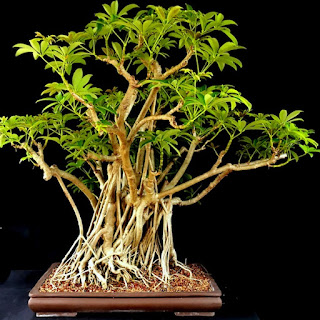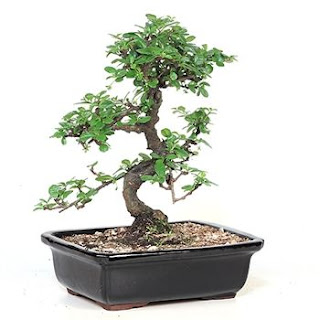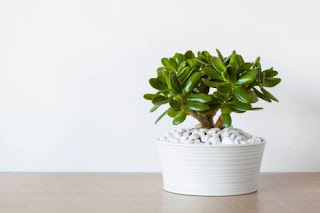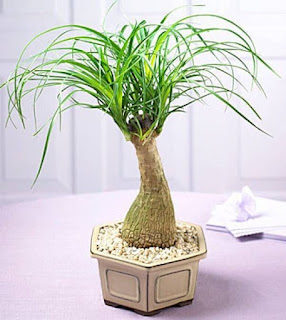TYPES OF BONSAI TREES INDOOR WITH PICTURES
 | |
|
it's unusual however evident; living things regularly make engaging and fascinating endowments. In any case, since not every person can keep a pony or a little dog in their office, indoor bonsai trees are by a wide margin the most useful and moderate decision.
Who can deny that a tad of verdure separates an in any case clean looking indoor condition?
Most indoor bonsais available to be purchased are tropical plants, so they will endure indoor conditions very well as long as you keep them watered, even in winter.
Try not to be concerned on the off chance that they lose a couple of leaves in the fall; they may not be deciduous, however, some will, in any case, drop a couple to account for new development.
What is the Best Choice?
The response to this inquiry relies upon what you need to do with it. Some bonsai are captivating to take a gander at, yet require moderately high upkeep; others are almost as intense as any house plant, yet unmistakably all the more fascinating.
The scope of shapes and styles of bonsais is unfathomable; from the exemplary looking Chinese Elm to one of the many interesting ficuses. Truly, it is ficuses, not fikii or something similarly unusual; it's Latin for fig.
Upkeep
One of the essential drivers of disappointment among bonsais is parchedness; the shallow state of bonsai pots implies that they have next to no supplements and water for possible later use.
The other enormous executioner is an absence of light; tropical trees are familiar with plentiful light, and high stickiness, even a south-bound windowsill isn't sufficient light for a few (particularly on the off chance that you are in the Southern Hemisphere).
Low mugginess levels are perpetually a thought for indoor tropical plants. Indoor territories are seldom as moist as the tropics, truth be told, the two radiators and climate control systems lessen the degree of surrounding dampness. In the event that this seems like a lot of difficulty for you or the individual getting your bonsai, don't stress.
With such a wide assortment, the correct mix of toughness and excellence for each circumstance is accessible. Here's a survey of a portion of the well-known ones.
Ficus
Normally known as figs, ficus is a family of around 850 species, not every one of them is utilized for bonsai, however many are. Their local living space is, for the most part, the tropical areas, with a couple of animal varieties in the calm zone. Ficus is the most vigorous of the bonsais; on the off chance that you are searching for visual intrigue with low support, these are the ones.
Being tropical; they can live anyplace you can (except if you like the room temperature reliably beneath 50F) as long as they get adequate water. Despite the fact that they appreciate being kept outside throughout the mid-year months, they don't generally require a great deal of daylight to flourish. Ficus are by a wide margin the most well-known sort of bonsai.
A mainstream decision for ficus is the Ginseng ficus, otherwise called the Banyan Fig or Taiwan Ficus. The Ginseng Ficus bark has a fascinating impact with even specks and a dim to rosy tone. It has little dim green leaves substituting up the stem.
The Ginseng Ficus has a thick trunk with uncovered roots, which is a regular component of ficus and adds to the entrancing appearance that bonsai trees have. So, an attractive, inconvenience-free fig. A genuine case of the Ginseng ficus is accessible here
Willow Leaf (ficus nerifolia/salicafolia)
 | |
|
A few people are of the conclusion that all bonsai look basically the equivalent since all they see enhancing work areas and window ledges are squat, dull green leaf, ficus. Indeed, even the Golden Gate Ficus has the run of the mill wide leaf. Without a doubt, figs are the least demanding to keep up, yet the varieties can be striking.
A fantastic case of this is the Willow Leaf Ficus. As the name recommends, its leaves look increasingly like they have a place on a sobbing willow than on a fig. Be that as it may, this isn't the main element that changes up its figgy appearance. A long way from being squat and thick, the storage compartment is slight and rich, making it trainable and tree-like.
Willow leaf figs are frequently accessible with trunks that have been molded to include more prominent enhanced visualization. The Willow Leaf Ficus is a magnificent blend of class and strength. Do you like the possibility of a delicate fig? We discovered this one accessible at a decent cost.
Hawaiian Umbrella (Schefflera arboricola)
 |
| image source-Google | image by-bonsaiempire |
This tree isn't a fig; it is a blooming plant of the Araliaceae family, however, it is still low support. In the event that you are searching for a present for somebody who might not have a green thumb (or you simply don't need it to kick the bucket on them), this is your best decision.
This striking, yet strong tree does well in high or low light, isn't to complain about water and its sparkly, small umbrella-molded leaves over its various, many-sided trunks make it a beguiling adornment. Ideal for home or office.
The Hawaiian Umbrella Tree Bonsai is lovely in appearance and extremely simple to think about and engender. Here is a connection to your own tranquil tree.
The presence of Chinese Elm, rich and old, is the exemplary bonsai look and, on the off chance that you are set up to deal with it, it truly is the best decision. Chinese Elms like a cool room and a lot of light; they will lose leaves incidentally, however, this is ordinary, in spite of the fact that it might be because of deficient light or water.
Keep the dirt clammy consistently and water liberally, douse it; parchedness is the greatest enemy of these trees. The Chinese Elm is vulnerable to Whitefly or Red bug invasions, yet any family unit bug spray will dispose of them.
Albeit otherwise called the Philippine tea tree, this tree is initially from China, unexpectedly, so is bonsai. It is named after the Fukien area, or Fuijan in the event that you lean toward progressively exact elocution. You will likewise discover it in Japan, Taiwan, Indonesia, and Australia.
The Fukien Tea is generally utilized for Penjing, which is the first craftsmanship before it was acquainted with Japan and renamed bonsai. On the off chance that you like innovation and history, this might be the one for you.
This evergreen, delicate, woody bush hails from South Africa where they can develop around nine feet tall. The Jade has a thick trunk and thick however fragile branches with thick green oval succulent leaves which can build up a red edge whenever given enough light. A little white bloom may show up throughout the fall, however not really.
The Jade's bark is delicate and green when youthful and builds up a red-dark colored shading when it develops. The Jade will develop outside, however, is touchy to the cold and is, in this way, best developed inside with a lot of daylight. Watering is somewhat dubious, the Jade likes an intensive splashing and afterward permitting the dirt to dry.
A very much made bonsai pot should deplete well, so it's practically difficult to overwater them in one go. Here's a connection to a provider with extraordinary plants in magnificent pots.
Brazilian Raintree (Pithecellobium Tortum)
 |
| image source-Google | image by-Koi Fish Gardens |
The ideal present for the climate buff. Do you know somebody who highly esteems their capacity to anticipate the climate? This is the perfect present for them. At the point when they're not watching the mists of the dawn or the ants, they will be captivated by this astonishing regular indicator.
At the point when it gets dim, rains or gets hot, this charming plant reacts by shutting its leaves. Its slanted stems and branches with stripping grayish bark give it an amazing "old tree" impact. Watch out for the thistles and appreciate the fragrant blossoms, the butterflies love them as well. Simply make certain to give it full sun.
Most importantly, it's anything but a palm; it's a type of plant in the lily family (Asparagaceae) and it's local to the conditions of Veracruz, Tamaulipas and San Luis Potosí in South-eastern Mexico.
In any case, it would seem that a palm, and it would be a disgrace to lose the similar-sounding word usage for natural exactness. The palm-like appearance is a consequence of the bunches of long, slight leaves curving and hanging effortlessly from the storage compartment.
Understand More: How To Pick Your First Bonsai Tree
Another name for the Ponytail Palm is Elephant's foot in view of its bulbous, flaky base. The state of the storage compartment isn't only for looks, it is a repository of water, making it impervious to drying out and subsequently moderately simple to keep up.
The Wisdom of the Ancients
Of the considerable number of bonsais referenced and all the bonsais in presence, it is difficult to deny that the Chinese Elm is among the most well known. The little, rosy green blossoms show up in pre-fall; they are supplanted by a similarly modest seed encompassed by a papery wing.
The tree's mottled bark chips to uncover patches of dark, cream, orange, darker and green. The general impact is the inclination of being within the sight of a tremendous, old tree. All that is left to do is float out of yourself and into a lavish green universe of stillness and harmony.
The facts demonstrate that more consideration must be paid to upkeep of this sort of bonsai, yet it is certainly justified regardless of the little exertion and some would contend that dealing with living things is a spirit improving encounter.
Regardless of whether you are giving it as a blessing or enhancing your own space, the Chinese Elm won't disillusion. You can see it with your own eyes.











0 Comments
plz do not any spam link in the comment box.